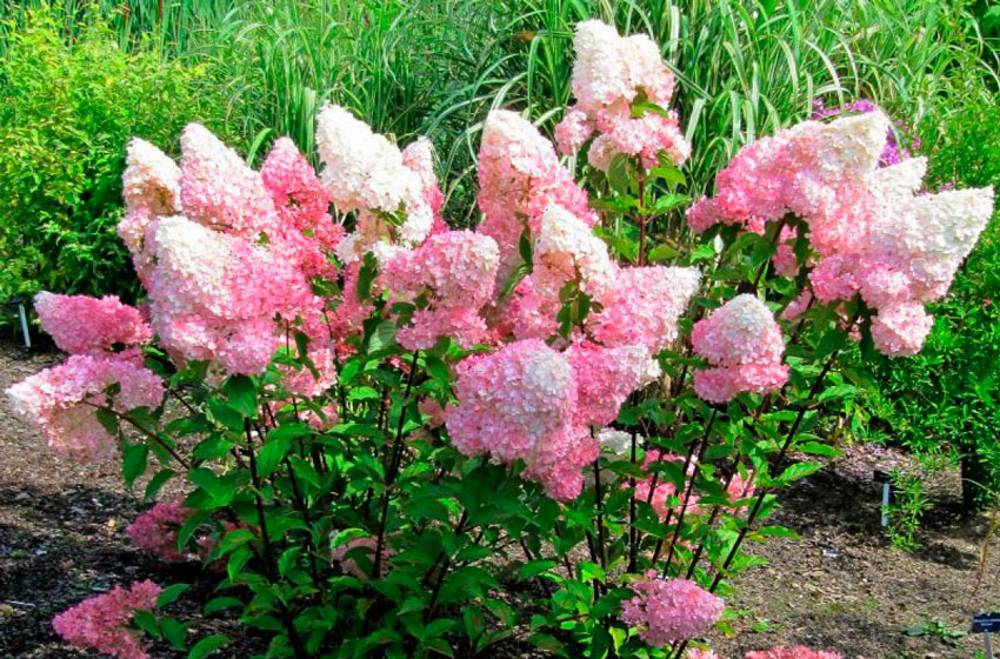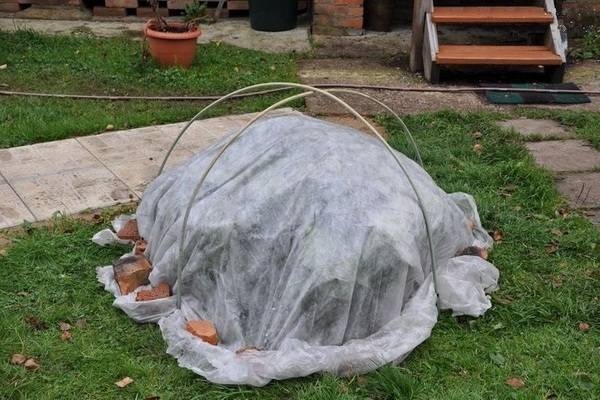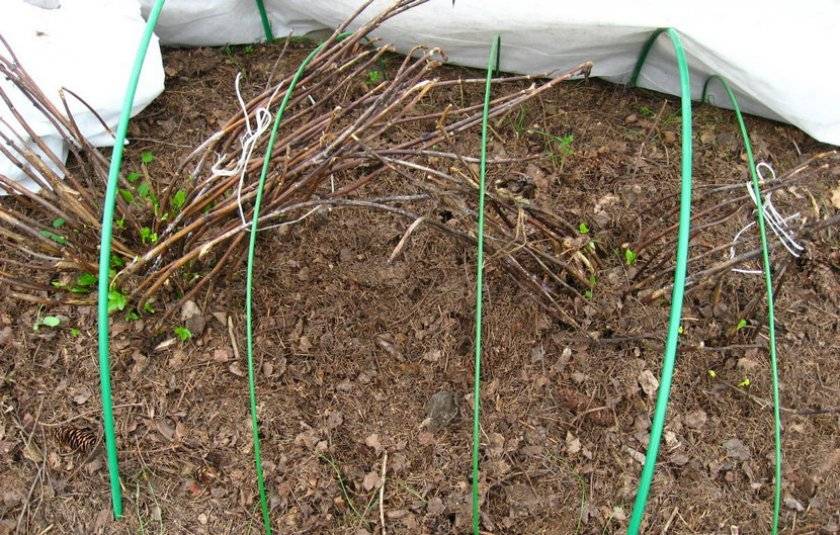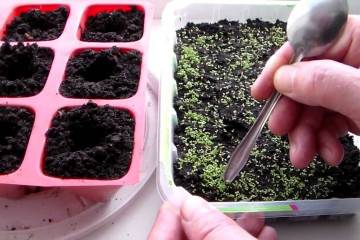How to cover a hydrangea for the winter - preparing bushes in the fall for wintering
Content:
In order for a plant to survive the winter normally, it needs to be properly cared for. It should include timely pruning, reducing the number of watering, soil insulation. Many inexperienced gardeners are interested in how to cover a hydrangea for the winter.
Do I need to cover the hydrangea for the winter
Winter can be a real challenge for flowers that grow outdoors, and hydrangea is no exception. When choosing insulation methods, you need to take into account the type of flower, the region in which it is grown, and age.
Large-leaved hydrangea has the weakest resistance to frost, so this culture must be covered. Even in warm areas with mild climates, slight temperature fluctuations can cause the death of flower buds.
If other varieties grow in the country, it is worth considering the climate of the region. Most often, the usual hilling of the plant is enough. This is especially true for tree varieties. It is enough to pour soil on the base of the crop to cover the roots with a large amount of soil.
When grown outdoors, it is imperative to cover bushes younger than 2 years old. Such plants are highly dependent on temperature parameters and other external factors.
When to shelter hydrangeas in different regions
If hydrangea is grown on the site, preparation for winter should include a number of actions. The main rule is considered to be the shelter of the bushes before the arrival of severe frosts. However, preparatory work must begin in advance in the fall.
The specific terms of warming depend on the climate of the region. In Central Russia and the Moscow Region, it is recommended to cover the culture at the end of October. It was during this period that frosts most often begin in the Moscow region and the Leningrad region.
In Siberia and the Urals, hydrangea wintering begins earlier. In these regions, it is better to insulate the bushes in mid or even early October. The southern regions are characterized by a mild climate. In such conditions, the culture can not be covered.
How to properly prepare a bush before shelter for winter
Hydrangea care in the fall and preparation for winter have certain characteristics. You need to start preparing for the cold in September.
So how do you prepare your hydrangea for winter? It is worth adhering to these recommendations:
- carry out sanitary pruning. It is necessary to get rid of dry and affected shoots. Slices should definitely be processed with garden pitch. It is also permissible to use a special protective composition;
- remove and burn dry leaves. In early September, you need to cut off all the leaves from the bottom of the bush. Thanks to this, the shoots become lignified faster and their resistance to frost increases. Before the arrival of cold weather, all leaves from the bush must be removed.It is recommended to leave only the apical leaves, which provide protection for the flower buds;
- stop watering the plant. This should be done in mid-September. Hydrangea does not need water-charging irrigation for the winter. If possible, it is worth protecting the crop from excess moisture. To do this, put a frame with a film over the bushes. It prevents moisture from entering the plants.
What can you cover
To preserve the hydrangea, you need to choose the right insulation. For this, spruce branches, dry foliage, plastic wrap are used. You can also use other materials.
Dry foliage
It is not enough to use only leaves for insulation. Additionally, other materials should be used - spruce branches or burlap. It is also permissible to take nonwoven materials - spunbond, lutrasil. As a last resort, film.
Maple or chestnut leaves can be used for winter shelter, as they do not rot in winter. In this case, the foliage of fruit or berry plants is not suitable.
Lapnik
This material is perfect for insulation. However, it is most often placed on top of dry foliage or covering material. At the same time, using one spruce tree to warm hydrangea will not be enough.
Agrofiber
After trimming the bush, you can build a special structure and pull the agrofibre on top. This material can be used as the main insulation. Thanks to its use, hydrangea will delight the next year with lush flowering.
Polyethylene film
Many summer residents use a film to insulate hydrangeas. However, it is important to take into account that this material is not able to pass air, which is necessary for full wintering. At the same time, the film protects well against excess moisture.
At a positive temperature, the hydrangea, covered with a film, begins to rot. To avoid negative consequences, the bush must be wrapped in 2 layers of non-woven material, and insulated with a film on top. Periodically, the structure needs to be slightly opened.
Sackcloth
Burlap is often used to warm hydrangeas. The bushes should be insulated with this material in 2-3 layers. From above, you can additionally cover them with foil. At the same time, it is worth leaving holes for ventilation at the bottom or on the sides. In spring, the film must be removed immediately, otherwise the plant may rot.
Brushwood
To protect the open ground around the bushes, you should use brushwood. Step-by-step sequence of actions for warming hydrangea:
- Trim the ends of the shoots.
- Tie the bush with a rope. In this case, you need to pull off the branches well.
- Press the above-ground part to the ground and fix it with metal brackets.
- Sprinkle with chopped brushwood.
- Additionally cover with agrofibre or roofing felt.
How to cover different types of hydrangeas: a step-by-step guide
Many are interested in how hydrangea of different varieties winters. There are 3 main types of culture, each of which has certain characteristics.
Large-leaved
In order for the culture to bloom luxuriantly and profusely, you need to know how large-leaved hydrangea winters. It should be borne in mind that this plant is considered the most thermophilic. To insulate it, you need to do the following:
- When the temperature drops to 0 ° C, you need to tie all the branches of the plant and bend them to the ground.
- Cover with spruce branches and agrofibre.
- Make a protective frame from metal rods.
Tree-like
This plant is considered hardy. When grown in the Middle Lane, you do not need to cover it. The exception is young bushes. It is recommended to insulate them with spruce branches.
Paniculata
This variety is considered the most resistant to frost. With proper preparation of the bush for winter, you can do without shelter. After the end of flowering, it is worth cutting off the faded shoots, removing the yellow foliage and shortening the branches to 30-60 cm. Then the panicle hydrangea needs to be spud. This will protect the roots of the bush from freezing.
When and how to clean up a shelter
It is necessary to remove the shelter taking into account the weather conditions. If there is a risk of recurrent frost, it is better to remove the insulation after the May holidays. In any case, when the risk of a severe drop in temperature has passed, the shelter can be removed completely.
Hydrangea wintering has a number of features. In order for the culture to easily endure the cold season, it needs to be covered. When choosing a heater, it is necessary to take into account the climate of the region and the type of flower.




















